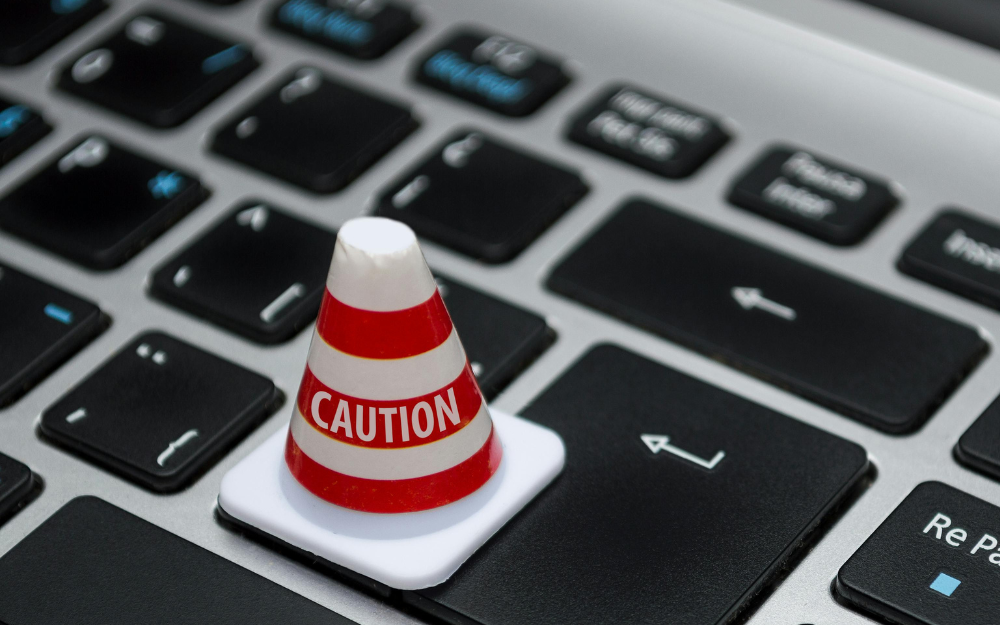It was supposed to be a productive day. You brewed your coffee, opened your laptop, and settled in to tick off the top three things on your list. But then, your internet cuts out. A client’s payment doesn’t come through. Your laptop freezes mid-project. By noon, you’re neck-deep in troubleshooting instead of ticking anything off.
When you’re a solo business owner, there’s no IT department, finance manager, or team member to pick up the slack. You’re the engine and the backup plan. And when something goes wrong, which it eventually will, it’s your time, income, and sanity on the line.
That’s why risk-proofing your business is so important. You’re building a safety net that respects your energy, protects your cash flow, and helps you stay in control when life throws a curveball. Let’s dive into the common risks and how to outsmart them.
What could go wrong?
Running a one-person business has its perks. But it also means you’re more exposed to everyday risks that can quickly become big problems for your business. Some of the most common disruptions solo operators face include:
- Tech breakdowns: When your laptop crashes or cloud storage syncs go haywire, there’s no IT person to call.
- Cyber threats: Cyberattacks impact businesses of all sizes, including solo operations. Whether phishing schemes, malware, or ransomware, cyberattacks can cause all kinds of problems, including reputational damage, financial issues, and potential regulatory punishments.
- Unreliable clients: Late payments, changing project scopes, or ghosting at deadline time, it’s all on you to manage. If you don’t let go of difficult clients, you’ll become resentful, sleepless, and the negativity will bleed into your daily life.
- Health issues or burnout: If you fall sick or hit a wall from overwork, there’s no one to take over.
- Isolation: Decision fatigue and lack of support can creep in over time, especially during busy or stressful seasons.
Because there’s no team to absorb the shock, these risks have a bigger impact. That’s why acknowledging them is smart planning. Think of it like weatherproofing your house: you can’t stop the rain, but you can make sure your roof doesn’t leak.
Set up systems that’ve got your back
The best time to plan for a disruption is before it happens. Simple, repeatable systems like the following will keep your business humming even if you’re offline or unwell:
- Automate file backups: Use cloud storage services with auto-sync, so your files are safe even if your laptop isn’t.
- Document your workflows: Write down how you do what you do. From client onboarding to invoicing, having a basic standard operating procedure (SOP) means less decision fatigue during busy weeks.
- Pre-schedule content and communication: If your business relies on emails, posts, or updates, create them in batches and schedule ahead.
You should also plan for sick days. Have at least one person you can depend on to hold down the fort while you’re out. Create a list for this person with helpful contact details and priority tasks, and have an answering service manage your calls.
Also, preparing for emergencies and securing your digital assets are good business hygiene practices. Develop a comprehensive risk assessment plan, implement data backup solutions, and secure physical hardware from environmental hazards like water and fire.
You can also lighten the mental load by using digital tools that handle the admin side, such as automated schedulers, email templates, and accounting software. They all reduce the cognitive clutter that comes from spinning too many plates.
Protect your time, energy, and sanity
Being your own boss can lead to blurry lines. A client messages you at 9 p.m., and you’re tempted to reply. A small job turns into a big one without a clear scope. You skip lunch “just this once” to get through the to-do list.
These tiny decisions chip away at your bandwidth. And when you’re running solo, your time and energy are most valuable.
Set boundaries in your business. Define your work hours, say no when things don’t feel right, and establish communication expectations. Be clear about when you’re available and what’s included in each project.
Answer emails once or twice a day, group similar work, and avoid constant context-switching. Use templates when you can to save time and stress. And don’t schedule yourself to the edge of capacity. A little white space can help absorb delays without panic.
Perhaps most importantly, take regular breaks. When you are in business, it’s hard to justify stepping away, even for a minute. But you have to. Put breaks in your calendar and eliminate the barriers that could prevent you from taking a break.
You fortify your business when you’re well-rested, focused, and clear on your boundaries.
Think like a risk-ready business
Resilient businesses assume that things will go sideways sometimes and make a plan for when they do.
Shift your mindset from reactive to proactive. Instead of scrambling every time a client misses a deadline or a payment is delayed, create a “solve it once” solution. For example, a clear late payment policy with automated reminders, a checklist for onboarding new clients, or a go-to plan for tech issues are all examples.
Running a solo business will always come with unpredictability, but that doesn’t mean you have to live in constant scramble mode.
A few simple safeguards, like automated backups, clear boundaries, and prewritten templates, can turn potential chaos into minor detours. Risk-proofing is about making sure your business can keep going without burning you.
Source: Flying Solo May 2025
This article by Indiana Lee is reproduced with the permission of Flying Solo – Australia’s micro business community. Find out more and join over 100K others https://www.flyingsolo.com.au/join.
Important:
This provides general information and hasn’t taken your circumstances into account. It’s important to consider your particular circumstances before deciding what’s right for you. Any information provided by the author detailed above is separate and external to our business and our Licensee. Neither our business, nor our Licensee take any responsibility for any action or any service provided by the author. Any links have been provided with permission for information purposes only and will take you to external websites, which are not connected to our company in any way. Note: Our company does not endorse and is not responsible for the accuracy of the contents/information contained within the linked site(s)


